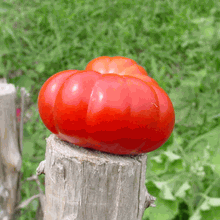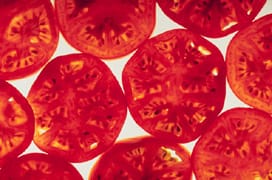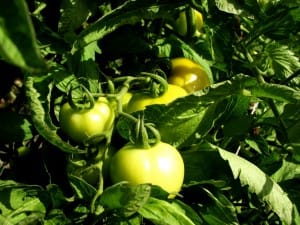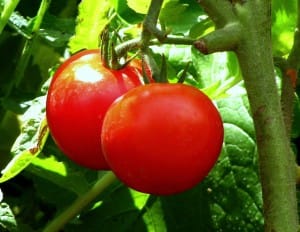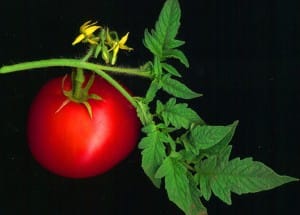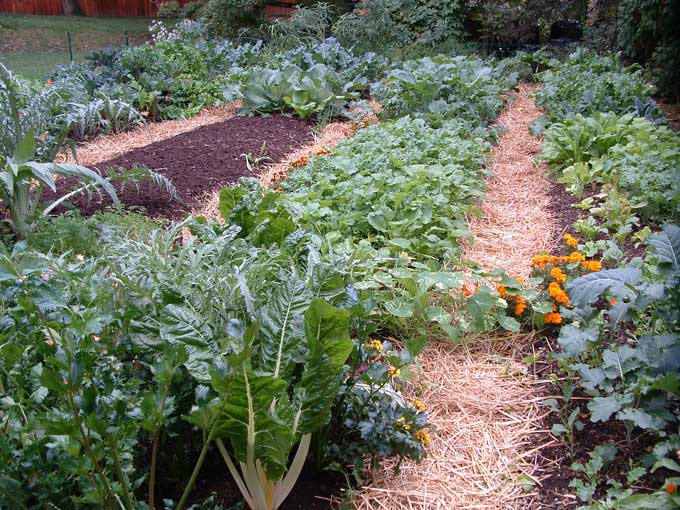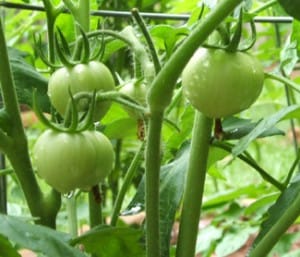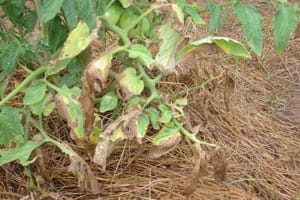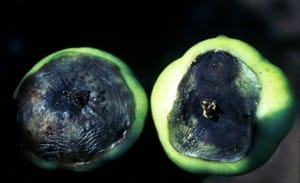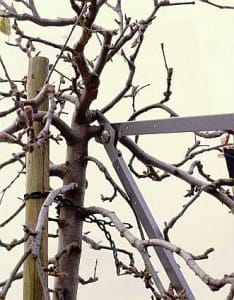This important information is shared with us by Robert R Westerfield, College of Agricultural and Environmental Sciences, Extension Horticulturist. He is our vegetable guru.
The tomato is the most commonly-grown vegetable in America. Unfortunately, producing big, red, juicy tomatoes requires considerable effort in preventing and controlling diseases.
Select tomato varieties that are disease resistant. This is very important! This may be your only chance to control certain diseases. The letters behind a variety’s name tell what diseases it is resistant to: T-Tobacco Mosaic Virus, V-Verticillium Wilt, F-Fusarium wilt and N-Nematodes, some good possibilities are Celebrity and Better bush but there are many others. Resistance does not mean the plants are immune to these diseases.
Move tomatoes away from where they or potatoes, eggplant or peppers were planted last year. Soils in these areas may harbor leftover diseases. Bury all plant debris when tilling and keep mulches pulled back an inch or two from the stem.
You can plant tomatoes in a traditional vegetable garden, a raised bed or put a few plants in a flower garden. I would avoid potted tomatoes because they require extra care in watering. If you grow potted tomatoes-use 5 gallon or larger pots. Water until water runs out the drain holes and then let the soil dry slightly before watering again.
The number one tomato disease now is Tomato Spotted Wilt Virus (TSWV). It is spread by thrips. Usually the top of the plant looks stunted or wilted. The young leaves may turn yellow and often have brown or black discoloration in them. The veins on the underside of leaves may thicken and turn purple. Fruit can have raised or flat rings or circles on them. Ripe fruit will have yellow circles or semicircles. The stem can have long brown lesions.
Once tomatoes get the disease, there is no control. There are two varieties of tomato that are resistant to TSWV. I have not yet seen them yet in stores. Spraying for thrips is also not effective.
Destroy infected plants as quickly as possible early in the season to prevent spread. Seal them up in a plastic bag. Even after the plant is pulled up thrips can leave it to spread the virus. Late in the season you may just want to let the infected plants finish ripening the fruit they have. Late season infection is less of a concern.
A fungus causes Fusarium wilt. It blocks the water conducting tissues in the plant. The leaves yellow and wilt, often starting at the bottom of the plant. This disease can affect just one side or one to several branches of the plant. The plant can die early producing no fruit. If you cut into the plant, the vascular system (just under the bark) will be brown. Control Fusarium wilt by planting resistant varieties. The ‘F’ after the name, like Celebrity VFN identifies these. Fusarium wilt can survive in the soil. Do not plant tomatoes in infected areas more than once every four years.
Bacterial wilt causes a rapid wilting and death of the plant. The plant dies so quickly it does not have time to yellow. To identify Bacterial wilt, cut through the stem. Bacterial wilt browns the pith or middle of the stem. On bad infections, the pith may be hollow. Cut a short section of the stem and suspend it in a clear glass of water. You can often see a milky ooze streaming out of the bottom of the cut stem. There are no controls or resistant varieties for bacterial wilt. It also attacks peppers, potatoes and eggplant. Carefully dig out infected plants and soil and discard. Do not plant any of these vegetables in this area for at least four years.
Southern blight is a white mold that rots the stem at or near the soil line. The plant then wilts or dies. Look for the cottony fungus growth and the light brown BB-sized fruiting structures of the fungus. The fungus may be slightly above or below the soil line. You may not see the fungus growing on infected plants when the weather is dry.
Bury all plant residues before planting, plant vegetables farther apart, and treat with Terraclor at planting if you have a problem with Southern blight. Some people wrap the stem near the soil line with foil to slow this disease and to control cutworms. The foil must extend two inches above and below the soil line.
Blossom-end rot (BER) appears as a dry leathery spot on the blossom end of tomatoes. It can also affect peppers and watermelons. The spot is usually on the blossom end, is tough and leathery and slightly sunken. Other rots may infect this spot. These fruits may turn red first.
BER is caused by lack of calcium in the blossom end of the fruit. By the time the tomato reaches the size of a nickel it has most of the calcium that it will ever have. This is why we need to prevent blossom end rot early. Inadequate water supply, low pH or low soil calcium levels can cause this problem. Find and correct these problems.
Once a plant has BER, it is hard to control. Calcium is best taken up by the roots so sprays are not very effective. Control and prevent BER by:
- Water the plants well and let the soil dry between waterings. A sample watering schedule is three-quarter inch twice a week if there is no rain.
- Apply a two to three inch mulch around the plant. Do not heavily prune the plant.
- Soil sample and lime and fertilize as needed. Avoid large applications of high nitrogen fertilizers when fruit are small.
- Add gypsum (calcium sulfate) or lime to the soil at planting. Mix a cup in each planting hole or use one pound per 100 square feet. You can apply this once you see the problem but these treatments work slowly. Plants often appear to grow out of the problem as conditions improve.
For further information. Tomatoes flowers will not set fruit if temperatures are not right, if the plant is water stressed or if it already has enough fruit. Night temperatures should be 55o to 75o F. for best fruiting. Night temperatures above 90o will especially cause problems. Water twice a week (3/4 inch each time) and mulch plants. There is a blossom set chemical you can spray if you can locate it in the garden centers.
Leaf Rolling occurs when the plant has set a heavy load of fruit and the light intensity is high. It can be caused by wet soils. The condition is harmless and should not hurt final production. Prune less heavily and plant in a well-drained area.
Uneven ripening occurs as grey or white spots inside the fruit. Several factors can be involved including improper nutrition, high temperature and disease. The only thing we can correct is nutrition. Do not use too much nitrogen and/or too little potassium. Soil sample and fertilize accordingly. Use high potassium fertilizers, 5-10-15, 15-0-15 especially as fruits begin to get larger than a quarter.
Fruit cracking is due to rapid growth after periods of slow growth. Rain after drought and heavy fertilization can cause fruit cracking. Harvest fruits after they begin to turn red but before they crack. Follow the watering practices we have discussed and look for cracking resistant varieties.
Catfacing is caused by cool temperatures at time of pollination. The fruit is deformed with ‘zippers’ on the skin. The fruit can have lobes, tear drops or several blossom scars. Plant resistant varieties, plant later, or use row covers to increase the temperature on cool days and nights. The large beefsteak varieties appear to be more susceptible. The fruit is still edible.
Sun scald appears as a white blistered area on the top of the tomato. Do not prune heavily and maintain nutrition and pest control so as to provide a good leafy cover for the fruits. Be careful not to confuse this with Blossom End Rot.
Resource(s): Vegetable Gardening in Georgia
Center Publication Number: 100
Happy Gardening!
